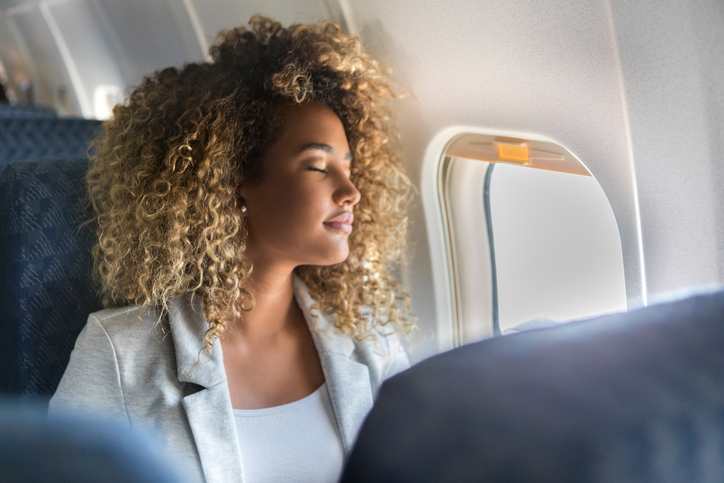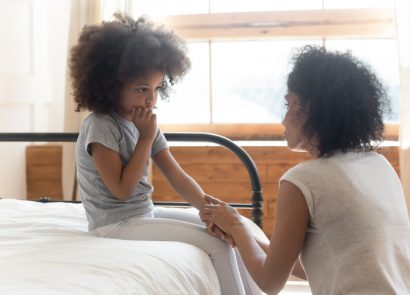From the loud noises of the jet to being sat in the smallest of spaces, there’s no denying that trying to fall asleep on a plane is extremely difficult.
However, if you’ve got an early flight or flying long haul, falling asleep is a must. So, to help increase your chances of catching some z’s, Martin Seeley, the CEO and sleep expert at MattressNextDay has shared his top tips below.
Head to the airport extra early to go for a walk before you board
While the recent flight delays should encourage you to head to the airport early, there’s another reason you should arrive there. Studies show that completing 30 minutes of moderate aerobic activity can lead to a boost in your sleep quality, so you should spend some time walking through duty-free before you get on board.
Book THIS prime seat for sleep…
Did you know that there is a prime place for sleep in a plane? Firstly, you should avoid the toilets as that’s where people tend to chat. Instead, you should pick a seat in the same row as the wing. Not only is this likely to be the quietest area but as the wing is usually where the emergency exit is based, you’ll have more leg room.
…Or board last to bag two-to-three seats
If you’ve missed out on a wing seat, don’t fret. Another hack for getting a good seat for sleep is to hold back in the airport gate until everyone has boarded. Last one to board? You can see where the empty seats are and pick a seat that has two or three empty seats – allowing you to spread out.
As soon as you sit on the plane, change your clocks
As soon as you get onboard, set your watch and phone to the time at the destination you’re heading to before acting according to that. For example, if you’re flying in the afternoon but it’s nighttime where you’re heading, you should try to fall asleep.
However, if you’re flying long haul, you should also adjust the time on the lead-up to your flight – especially if you’re flying across multiple time zones. You can do this by adjusting your bedtime by an hour or two a few days before you’re due to fly. Both of these tips will help your internal body clock (known as your circadian rhythm) adjust, making you less susceptible to jetlag.
Before you board, download a white noise app
If sleep is your main priority on your flight, make sure to download white noise music before you fly. A 2021 study found that white noise significantly improved sleep for people who experience difficulty sleeping due to high levels of environmental noise – which is inevitable on a plane due to the noise of the jet, and the significant number of people.
There are lots of playlists on Spotify. However, if you don’t find it relaxing, you could instead pre-download sleep stories or meditation guides that can be found on the likes of Headspace or Calm.
Swap your wireless earphones for noise-cancelling headphones
To listen to white noise or sleep stories, you’ll need headphones, however, you shouldn’t bring just any headphones. As flying can be extremely noisy, with the noise of some cabins being more than 85 decibels which is louder than a vacuum, you should ideally bring noise-cancelling headphones.
Whatever you do, try to refrain from bringing any wireless earphones as you may wake up after an hour or two and find that one has fallen out of your ear. As aeroplane seats are so crammed together and people place their bags and coats on the floor, it’ll be extremely hard to find a small missing earphone, such as an AirPod.
If you take your sleep seriously, pack a sleep kit
If you’re flying late at night, or through the night, an eye mask is essential to block out the light from any TV screens and reading lights. Whilst some airlines provide these, they’re of lower quality and usually let in some light at the bottom – making it hard for you to fall asleep. Instead, you should purchase one that is soft, can mould around your face and has a good cover to block out the light.
You should also bring a travel pillow. The best are those that are made of soft memory foam and that surround your neck, giving you extra support whilst you sleep upright. However, if you are limited by a lack of space, you can bring a large scarf that can be rolled around your neck for support or used as a blanket if the flight gets chilly.
Finally, you should bring earplugs to help drown out the noise of the roaring jet engines and people chatting.
Switch alcohol for H20
If your airline offers unlimited alcohol, you may be tempted to get tipsy – or even if your airline doesn’t, you may want to buy some alcohol to celebrate going on holiday. However, if you plan on sleeping on the plane, you should refrain from drinking any alcohol.
While it may make it easier for you to drift off, alcohol actually disrupts your sleep and lowers the quality – making you more tired in the morning.
The air on planes is notoriously dry, which can lead to scratchy throats, dehydration, eye irritation, and other conditions that can also make it hard to fall asleep. Therefore, drinking water before and throughout your flight will not only alleviate these problems but make it easier for you to fall asleep.






















